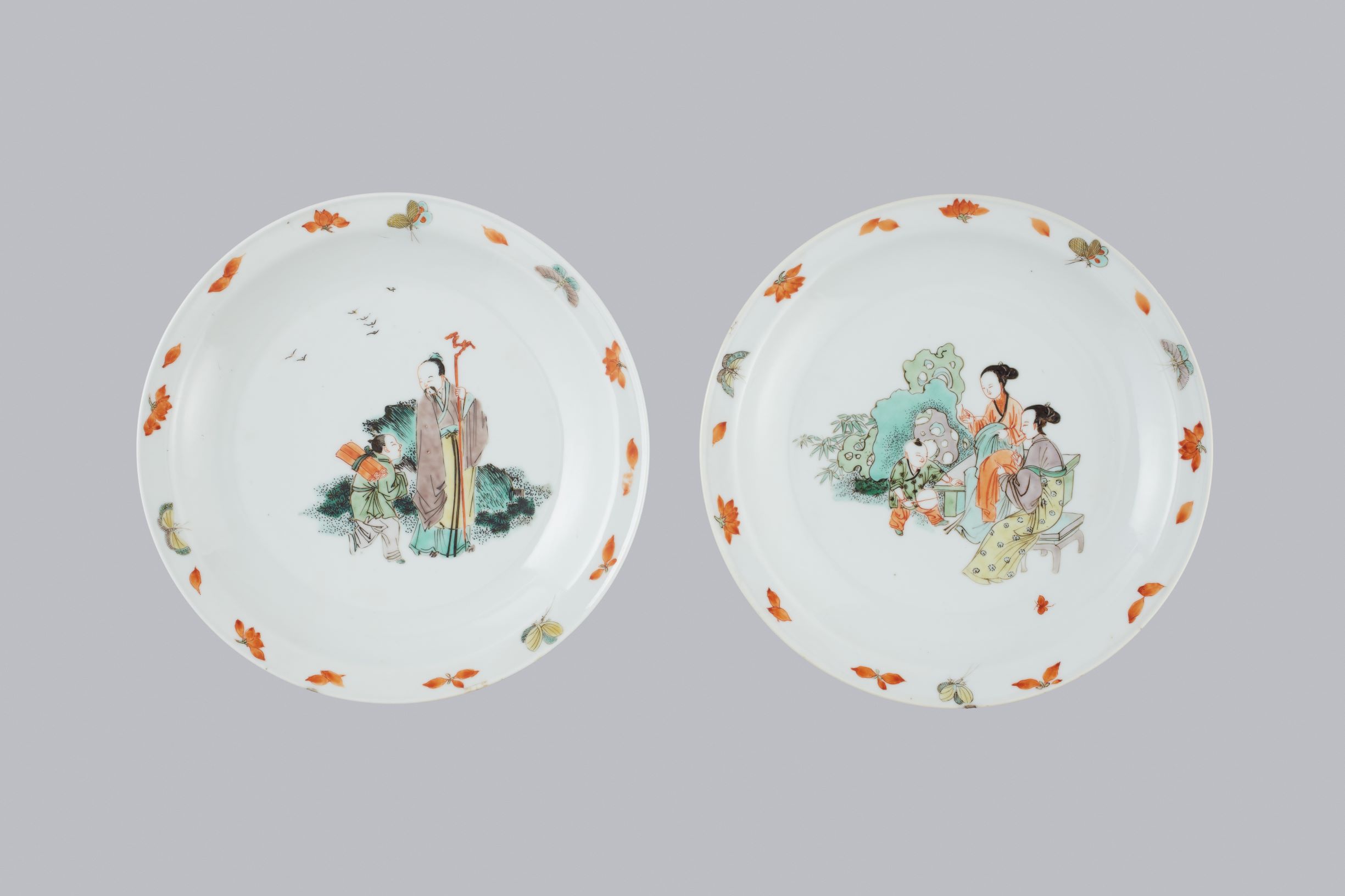
Pair of Plates [Ch104]
Jingdezhen, Jiangxi Province; Qing Dynasty, Kangxi period, c. 1715 but bearing Chenghua (1467-1485) marks
Porcelain with famille verte enamels (D. 17.2 cm)
The centres of these dishes are delicately enamelled in the Chinese taste, one with two ladies sewing in a garden, a small boy in attendance, pierced rocks behind; the other with a bearded Immortal holding a staff, on his right a boy in attendance. The flat rims are enamelled with flowers, foliage and butterflies. The undersides have Chenghua six-character marks within double circles.
These plates are from a group of ten sold at Sotheby’s in 1959, the others now being dispersed around the world. They are good examples to show how Chinese imperial marks were used. In principle the six or four character marks show that the piece of porcelain had been made for use in the imperial court, but from the later Ming, and particularly in the Qing dynasty, earlier marks were used, sometimes on copies of Ming originals and sometimes, as in the present case, on original designs which were considered as beautiful as earlier ones. These plates are comparable to a set of Kangxi marked plates reputedly made for the emperor’s sixtieth birthday in 1713. Bowls with identical designs to some of the birthday plates appear with and without a Kangxi mark. These plates appear both with Kangxi and Chenghua marks, and it has been suggested that the pieces without the imperial Kangxi marks were ordered by rich people not part of the court circle.
Literature: Anthony du Boulay, The Duberly Collection of Chinese Art at Winchester College (Winchester, 2019), p. 98
Provenance: Bequeathed as part of the Duberly Collection, 1978; purchased by Major Montagu and Lady Eileen Duberly from John Sparks, 31 January 1966 (£480); formerly in the collections of W.A. Evill, sold Sotheby’s, London, 11 November 1965, lot 94, and of Irwin Laughlin, Meridian House, Washington D.C., sold Sotheby’s, London, 30 June 1959, lot 83
Location: Treasury, Gallery 2